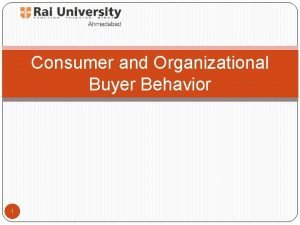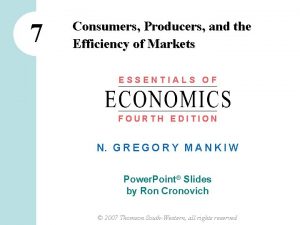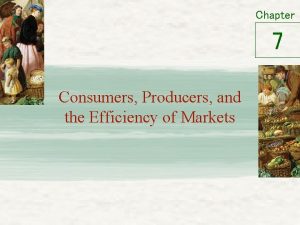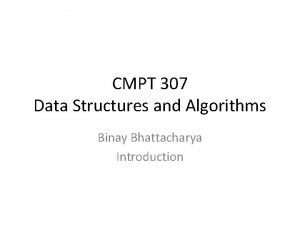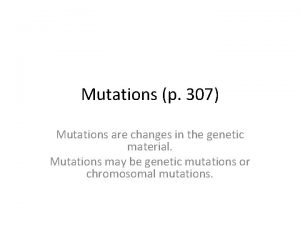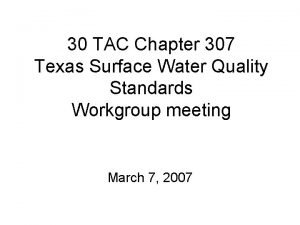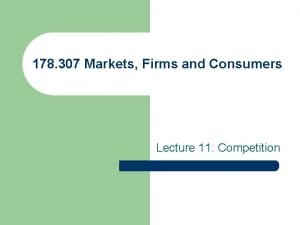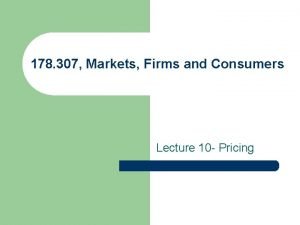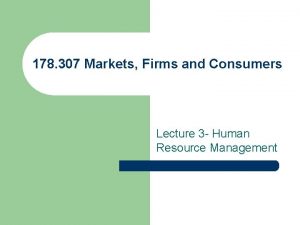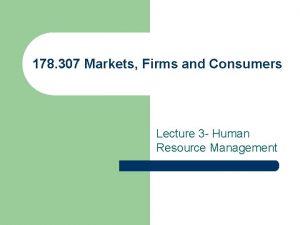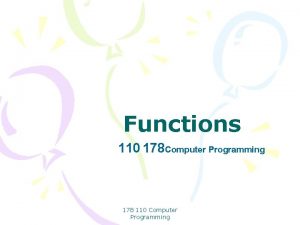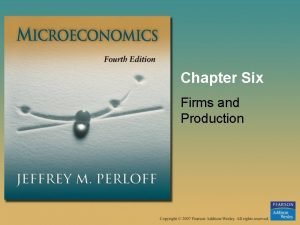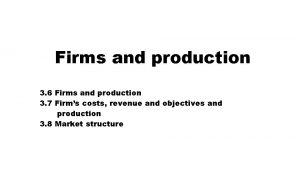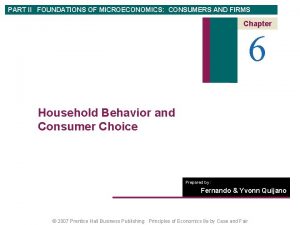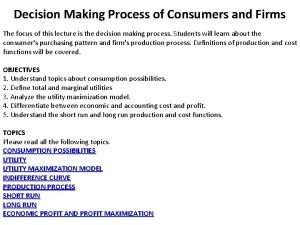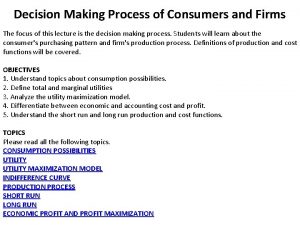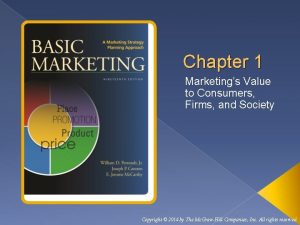178 307 Markets Firms and Consumers Lecture 9



















- Slides: 19

178. 307 Markets, Firms and Consumers Lecture 9 - The Consumer

Quote l Tough guys don’t do math. Tough guys fry chicken for a living. – – Jaime Escalante From the movie Stand Deliver (1988).

Reading l Earl, P. Economics and Psychology: A Survey

In the 1990 s l l l Nintendo’s N 64 gaming console lost massive marketshare to the Sony Playstation The N 64 was the (technically) better console What motivated consumer’s to switch?

Introduction l Overview – – – Revision of the Neoclassical Model The Lancaster Model The Behavioural Approach l l This lecture considers the important interaction between the firm and their consumers. Emphasis is on understanding how consumer’s make choices.

The Neoclassical Model l If preferences are – – Complete (any 2 goods can be compared) Reflexive (any commodity is at least as good as itself) Transitive (if A preferred to B and B preferred to C, A must be preferred to C). Continuity, strict convexity, monotonic, free disposal.

. . then l l It is easy to model the consumer’s utility function We can logically show that demand is a function of prices and income l Problems – – – Smooth substitutions don’t occur Consumption may be not be continuous (e. g. lexicographic). Why would new goods enter the market?

Lancaster’s Model l l Lancaster treated goods as combinations of attributes. The household functions like a firm. l l l If transformation technology fixed If attributes have to be combined in a linear fashion then… The model can be easily represented in Cartesian space.


Analysis l l l New goods can be represented as extra rays. Price changes will change the length of the ray. Quality improvements will also change length of ray l l l We can show “jumps” in consumer behaviour. Proliferation of attributes in a good understandable. We can answer why Nintendo lost market share…

Behavioural Perspective l l l Consumers use heuristics (simplifying procedures) to purchase a good. Rules are retained so long as they lead to satisfactory results. Simplification necessary because of limited processing ability. l l Miller’s rule Cognitive skills Theorists distinguish deliberative choices from routine behaviour. Such decision processes may have little to do with impact of choice!

How do consumers actually make choices? l l Consumers can be conceived as having certain aspirations. Characteristics of goods are tested against these aspirations. l Compensatory heuristics permit good achievement in one characteristic to compensate for a poor achievement in another.

Compensatory Heuristics I l Additive Differences – – Take a rival pair of prodcuts Value their diffferences Use victor as a new reference point Continue until one good selected l Unweighted Averaging – – – Score goods for each test characteristic Determine which has the highest total or average Note that unweighting is a poor method.

Compensatory Heuristics II l Polymorphous Procedure – – – Define series of aspirational tests Rank each good in terms of the number of tests passed Does not take into account the margin of success/failure.

Non-Compensatory Heuristics l l Non-compensatory procedures are unforgiving if a good fails a particular aspirational test This suggests that substitution effects are actually weak.

Non-Compensatory Heuristics I l Disjunctive Rule – – Choose the product that scores the best in respect of one characteristic. Either very ‘low involvement’ or that preferred by a fanatic… l Conjunctive Rule – – Set aspirational targets for each characteristic Reject any that fail to meet any targets, regardless of margin.

Non-compensatory Heuristics II l Elimination by aspects – – – Compare goods against a single aspirational level. Eliminate any that fail Tests goods against another aspirational target until choice is made l Lexicographic Rule – – Characteristics are ranked in order of priority Use lower priorities only if multiple goods meet first priority.

Characteristic Filtering – – Set aspirational targets for each characteristic All products that pass the first test, can take the second etc. C D E Target 2 l 2 nd Priority Non-compensatory Heuristics III A B Target 1 1 st Priority

Summary l l Characteristic Filtering: D & E are 1 st equal, B next, then A, then C. Conjunctive Rule: D & E are 1 st equal, A, B & C are equal Naïve Lexicographic: E 1 st , B 2 nd , D 3 rd , A 4 th , C 5 th. Hybrid rules can also be used.
 Primary consumers and secondary consumers
Primary consumers and secondary consumers Consumers, producers, and the efficiency of markets
Consumers, producers, and the efficiency of markets Organizational buyer
Organizational buyer Consumers producers and the efficiency of markets
Consumers producers and the efficiency of markets Chapter 7 consumers producers and the efficiency of markets
Chapter 7 consumers producers and the efficiency of markets Long run market supply curve
Long run market supply curve Firms in competitive markets chapter 14 ppt
Firms in competitive markets chapter 14 ppt Producers primary consumers secondary consumers
Producers primary consumers secondary consumers Creating products for consumers in global markets
Creating products for consumers in global markets Financial intermediaries ppt
Financial intermediaries ppt Iso/tc 307 blockchain and distributed ledger technologies
Iso/tc 307 blockchain and distributed ledger technologies 01:640:244 lecture notes - lecture 15: plat, idah, farad
01:640:244 lecture notes - lecture 15: plat, idah, farad Iso/tc 307
Iso/tc 307 Cmpt 307
Cmpt 307 Byk345
Byk345 Xm 307
Xm 307 Kaman dayron
Kaman dayron P 307 2016
P 307 2016 30 tac 307
30 tac 307 978-1-307-00917-0
978-1-307-00917-0


